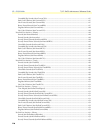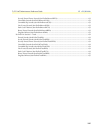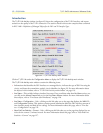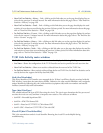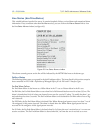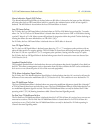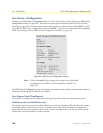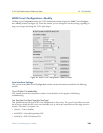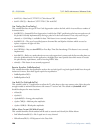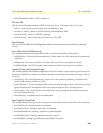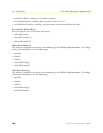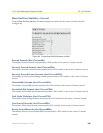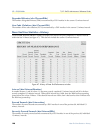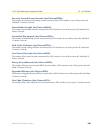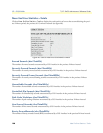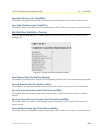
17 • T1/E1 Link T1/E1 DACS Administrators’ Reference Guide
124 WAN Circuit Configuration—Modify
• dsx1E1(4)—Based on CCITT/ITU G.704 without CRC
• dsx1E1-CRC(5)—Based on CCITT/ITU G.704 with CRC
Line Coding (dsx1LineCoding)
This variable describes the type of Zero Code Suppression used on the link, which in turn affects a number of
its characteristics.
• dsx1JBZS(1)—Jammed Bit Zero Suppression, in which the AT&T specification of at least one pulse every 8
bit periods is literally implemented by forcing a pulse in bit 8 of each channel. Thus, only seven bits per
channel, or 1.344 Mbps, is available for data. This feature is not currently implemented.
• dsx1B8ZS (2)—The use of a specified pattern of normal bits and bipolar violations which are used to
replace a sequence of eight zero bits.
• dsx1HDB3(3)
• dsx1ZBTSI(4)—May use
dsx1ZBTSI, or Zero Byte Time Slot Interchange. This feature is not currently
implemented.
• dsx1AMI(5)—Refers to a mode wherein no zero code suppression is present and the line encoding does not
solve the problem directly. In this application, the higher layer must provide data which meets or exceeds
the pulse density requirements, such as inverting HDLC data.
• other(6)—This feature is not currently supported.
Receive Equalizer (linkRxEqualizer)
This variable determines the equalization used on the received signal. Long haul signals should have the equal-
ization set for more. Short haul signals require less equalization.
• linkRxEqualizerOff(1)
• linkRxEqualizerOn(2)
Line Build Out (linkLineBuildOut)
This variable is used in T1 applications to adjust the T1 pulse shape at the cross connect point. Select the pulse
strength needed to minimize distortion at the remote T1 receiver end. The default is
t1pulse0dB, which
should be adequate for most situations.
• triState(0)
• e1pulse(1)
• t1pulse0dB(2)—Strong pulse amplitude.
• t1pulse-7dB(3)—Medium pulse amplitude.
• t1pulse-15dB(4)—Weak pulse amplitude.
Yellow Alarm Format (linkYellowFormat)
This variable identifies which standard will be used to transmit and identify the Yellow Alarm.
• link YellowFormatBit2(1)—Bit-2 equal zero in every channel
• YellowFormatDL(2)—FF00 pattern in the Data Link



